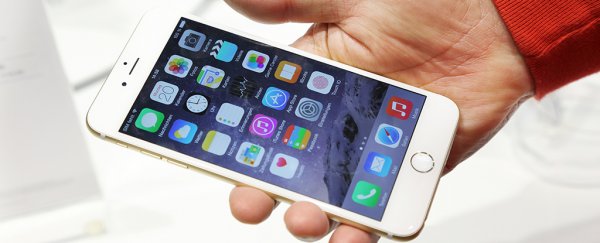We know that the 1s and 0s that make up our photos, videos, music, and other digital files are actually physically present on a memory drive - but does this written data actually weigh anything? And how many gigabytes' worth would it take before we noticed the difference on a flagship iPhone? Inverse's Joe Carmichael took a long, hard look at the science behind that question, and here's what he found.
The flash memory inside modern-day mobile devices is different from the older mechanical hard drives found in a lot of laptops and desktops. In fact, the newer solid-state drives are so much faster and superior, they're starting to make their way to full-sized computers as the price of this type of storage continues to drop.
As computer scientist John D. Kubiatowicz from UC Berkeley explains in The New York Times, a stored data byte does actually have a physical weight, albeit a very, very small one - around 1 attogram, which is one-quintillionth of a gram.
That's because flash memory uses trapped electrons to distinguish between 1s and 0s - while the number of electrons doesn't change, once they're trapped (or once data is stored) they have a higher energy level and thus a greater weight.
Which brings us back to how much data we'd need before an iPhone would be noticeably heavier in the hand, not just to a super-precise set of scales.
According to Weber's Law, humans can tell if two objects weigh different amounts if the discrepancy is more than 5 percent. With the most recent iPhone 6s weighing in at 143 grams, that means we need something in the region of 7 grams of data for it to be noticeable.
Now, the entire Internet - some 5 trillion terabytes, give or take a blog post or two - is estimated to weigh about 0.2 millionths of an ounce or a little more than 1/200,000 of a gram (bear with us here).
Obviously that's a lot less than the 7 grams we're aiming for, and so you'd need to multiply the entire weight of the Internet more than a million times to reach 5 percent of an iPhone 6s.
All this maths is very rough and speculative, but it at least gives us a general idea of what we're dealing with. When all the calculations are worked out, the final figure is 5.7 quintillion terabytes of data would equal 7 grams.
If that doesn't mean much to you, it's about four quadrillion times the estimated size of the human memory (1.25 terabytes), or enough data to fill roughly 40 quadrillion large (128 GB) iPhone 6s handsets.
In other words, put as many photos and movies on your phone as you like, because you're an unimaginably long way from making any perceptible difference to its weight - even though each extra byte adds a little more.
